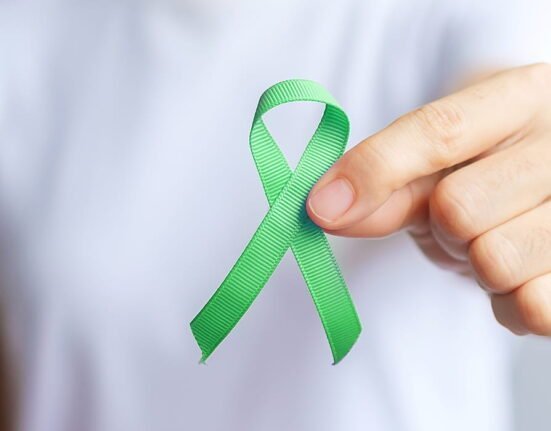In this article, we gonna discuss about the biography of a prominent psychoanalyst who challenged Freud’s idea of penis envy and came up with her own concept called ‘womb envy’ and also contributed more to the field of ‘Feminist Psychology’.
Karen’s insights were derived from her efforts to relieve her own pain, as well as that of her patients.
If her suffering has been less intense, her insights would have been less profound.
Bernald J Paris
Let’s explore her life and challenges.
Background
Karen Horney (pronounced as Horn-eye), was a German Psychoanalyst who was known for her work on ego psychology, neurosis, feminine psychology and also for opposing Freud’s concept of penis envy.
Karen Horney was born on September 15, 1885 in Blankenese, a village situated on the north bank of the Elbe River located to the west of Hamburg, Germany. The full name of Karen was Karen Clementia Theodora Danielsen. Karen was born to Berndt Henrick Wackles Danielsen and Clothilde Marie Van Ronzelen, also called Sonni. Sonni’s father Jacob Joseph Van Ronzelen was a very famous architect and also served as a director of harbour construction. A street in Bremerhaven was named after him and in the local museum he was acknowledged for his skilled work in the construction of port at Bremerhaven. Sonni got married lately in her 28 years of age.
Berndt and Sonni had two children; Karen was three and a half year younger than her brother named Berndt. Karen also had four half siblings (brother or sister with whom they share one biological parent) from her father’s previous marriage. Her father was a sea captain in one of the large shipping lines in Hamburg. He piloted ships from South Atlantica to South America and considered as a person with good nautical and authoritarian skills and served as a leader for a crew consisted of 40 men. He showed a very stern attitude and expects his family to accept and obey whatever he says without any further questions or arguments. He restricts Karen while giving freedom to her elder brother. His children named him as ‘Bible thrower’, since he had a strong faith in God and religious fundamentalist and often ask the family members to perform prayers and other religious activities.
That created a question of spiritual matters in Karen’s mind as she struggled to integrate these religious feelings of her father with home life, as she didn’t receive any sort of support or love from him. Karen had ambivalent feelings towards her father. He took her to several boat trips (which later made her to develop a cosmopolitan outlook over life and made her to realize the importance of cultural factors) that last for longer duration which was not common during those days and also she felt afraid of her father because of his stern attitude.
Read More: The Role of Women in the Early History of Psychology
Parent’s marital life
A 16-year age gap and Karen’s father’s frequent absences due to his job as a ship captain created turmoil in her parents’ marriage. Sonni considered Berndt and Karen as her source of happiness and relief. Karen used to stand by her mother’s side during any argument and remained emotionally distant from her father. Quinn (1987) also reported that her father was absent in the family photographs due to his job’s nature. Karen also didn’t mention much about her father in her dairy which is an indication for the lack of affection towards father. When Karen was 19 her parents got separated mutually.
Social Context
Karen was born in Germany during the Industrial Age, a time when industries began using steam power and horse-drawn railways were being replaced by electric trams. And also, societal changes took place, where people started raising voice for women’s rights and females were permitted to appear for the college entrance during the early 1900s.
Read More: What Is Feminist Psychology?
Karen’s experience with parents
Karen also felt difference in the way her parent’s treat herself and her brother. She didn’t receive much affection from either of her parents. That gave rise to doubt her self-worth. She became very sensitive to negative comments or criticisms. She also felt herself unattractive though she appeared beautiful to others. Karen said ‘If I couldn’t be beautiful, I decided I would be smart.’
Karen’s Adolescence
Karen dreamt of becoming a medical doctor from her early age of 13, though it was very uncommon at that time, that a woman was allowed to peruse her tertiary degree. At a young age, she may not have fully understood the social restrictions imposed on women during that socio-historical era. Her father refused to pay fee for her medical studies. As a result, she even planned to become a teacher (that is socially approved career for women) so that she can pay on her own for studies. Sonni is the one who encouraged her dream and saved Karen from her father’s attitude. With the help of her mother, who was very supportive, she accomplished her dream. During her adolescence she struggled a lot with the feelings of inferiority and shyness.
Read More: 15 Women psychologists Who made their contribution to the field
Karen’s Diary
Karen developed a habit of writing diaries at the age of 13 and continued until she was 26. She addressed her diary as ‘Du’. She was a private person. Thus, she holds a very personal connect with the diary and shared all her emotions in it. She also made statements like ‘What do you think about this?’ while writing diary considering it as a living thing. Karen considered it as a way to remember her life events that happened during the phase of teenager and young adult. Her last writings in dairy reflected her analysis with Dr. Karl Abraham and also her experiences of School, friendship, spiritual struggles and love relationships. Her diary showed more concern on the importance of human relationships and role and rights of women.
Karen’s College Life
The Universities didn’t accept women until 1900s. In 1906, Karen was among 34 women admitted to medical school out of 2,350 students that year, with only 58 women in total. She pursued her education at the University of Freiburg. This increase in female medical students was influenced by feminist movements advocating for women doctors to treat female patients. She always wanted to be competent than her male associates in the male dominant society. At first, Karen had very hard time in adapting to the University life and remained aloof.

Later, she began to make friends. She also met her future husband Oskar Horney, majoring in economics, during an academic school evening and became friend with him. Though she didn’t feel attracted to him in the beginning and instead developed a romantic relationship with Oskar’s friend, Louis Grote. He was one semester ahead of her. She was attracted to Louis’s Self-confidence, good look and inner harmony, these qualities which she felt like she didn’t possess.
Meanwhile, Oskar pursued his Ph.D. in Political Science at the University of Brunswick. Over time, Karen and Oskar’s friendship deepened, and they began exchanging letters for 15 months (July 1906 – September 1907). While Oskar was not as outwardly charming as Louis, he was highly intelligent and offered Karen emotional support, particularly when she faced difficulties in her relationship with Louis. Eventually, Oskar returned to Freiburg, and their bond grew stronger.
During this period, Karen stopped writing in her diary—a habit she had maintained since the age of 13. Some suggest that the demands of medical school and her evolving relationship with Oskar left her with little time for personal reflection. Others believe that her emotional needs were increasingly fulfilled through her relationship, reducing her reliance on diary writing as an outlet.
Karen’s marriage life
Karen and Oskar got married in 1909, while she was still attending her medical training. Meanwhile, Oskar completed his studies and got promoted as manager. Horney completed her studies, simultaneously fulfilling the roles of homemaker, a mother and a medical student. The couple had three daughters. In 1911, during her final medical examination she gave birth to her first daughter, Brigitte and in 1913, during her psychiatric internship her second daughter Marianna came to the world.
During this time, she was busy taking care of two children and writing her thesis. Her thesis title was “A case report on the Question of Traumatic Psychosis”. And in 1916, her third daughter Renate was born. Karen experienced personal losses during this period as well. Her father passed away at the age of 74, a year after her marriage. In 1911, just a month after Brigitte’s birth, she lost her mother, who was 61 years old.
Oskar was very dedicated to his career, working for Hugo Stinnes Corporation and therefore he could not aid her in taking care of children. The conflicts in her role along with the loss of her parents plunged her into depression. Amidst family stress and the need for emotional support, Karen is believed to have sought solace in an extramarital affair with Oskar’s friend, Walter Honroth. In 1923, Oskar’s firm underwent a major financial loss and he also developed meningitis. After that he became more argumentative, dominating and authoritative.
At the same year, Karen’s brother died of Pneumonia when she was 41. Horney experienced considerable emotional turmoil and struggles. This circumstance worsened her mental health ended up into the recurrence of depression. A year later, they got separated. This separation brought into financial hardships. Karen and her daughters underwent a very hard time. Even her third daughter Renate started developing behaviour problems in response to these adjustments. She started throwing stones at passing car and her school warned that they’ll dismiss her.
Karen’s Career
During her depression phase, she went for treatment to psychoanalyst Dr. Karl Abraham. Karen didn’t feel satisfied with her therapy outcome. Then she started questioning the basics of psychoanalysis. For several years, she participated in the weekly evening sessions to discuss the concepts, principles and therapeutic processes along with Dr. Karl Abraham and other analysts. By 1917, She wrote her first paper on psychoanalysis, “The techniques of Psychoanalytic therapy”.
Berlin Psychoanalytic Society
This informed session led to the formation of Berlin Psychoanalytic Institute in which she remained as an active member from 1918 until 1932. She was one of the founding members of Berlin Psychoanalytic Institute. She trained students in Psychoanalysis and performed the roles of Lecturer and Supervisor at the Institute. She started developing her own ideas and begin to deviate from Freud’s idea of psychoanalysis. She also began treating patients based on their present interpersonal relationships rather than on the childhood experiences and unconscious thoughts. She wrote 14 papers on the psychology of Women. In 1932, she left Berlin psychoanalytic Institute and went to U.S.
Moving to U.S
At the age of 47, she was offered a job in United States as a director of Chicago Psychoanalytic Institute. Franz Alexander, a student of Karen from Berlin offered her this job. She made a courageous decision to leave the comfort of her familiar environment and embrace the challenges and opportunities in the U.S. However, she found reassurance in knowing that her two daughters were independently leading their own lives. Brigitte, her first daughter became a famous German actress and was awarded Reinhardt price.

Marianne pursued her dream of becoming a doctor and joined the University of Freiburg, while Renate was just 15 at the time. Karen and Renate initially struggled to adapt to life in the U.S., finding the culture more materialistic than in Germany, where people placed greater importance on salaries and addressed each other by first names. Despite these challenges, Karen persevered, passed the necessary exam to practice as a psychoanalyst, and even applied for U.S. citizenship. Two years later, she moved to New York to establish her private practice.
Moving to New York
Karen and Renate moved to New York where she taught courses at New York Psychoanalytic Society and started doing private practices. At New York, they felt more comfortable as they got a sophisticated apartment. Karen also got her driving license that gave her freedom to go out whenever she wants. She also got plenty of opportunities to meet and share ideas with the eminent social scientists like Erich Fromm, Clara Thompson, Margaret Mead, H.S. Sullivan, Ruth Benedict and John Dollard. Some sources suggest that Karen Horney maintained a romantic relationship with Erich Fromm for seven years (Quinn, 1987).
During this time, she continued refining her theories, writing books and journal articles, and presenting her ideas at professional seminars. However, her views sparked controversy among orthodox Freudian followers at the New York Psychoanalytic Institute, ultimately leading to her resignation. Several other members resigned in solidarity. She later found support at the American Institute of Psychoanalysis, which helped her further develop and promote her own theories.
Karen’s final days
During her final days, she travelled to Japan seeking spiritual insights and aimed to connect Zen Buddhism with her interpersonal relationship theories. Her elder daughter Brigitte and her close friend Daisetz Suzuki accompanied her. After she returned from this trip, at 1952 she was diagnosed with gall bladder cancer. Karen Horney passed away on December 4, 1952, at the age of 67. She left behind a legacy of groundbreaking psychological theories and witnessed her daughters’ achievements with pride—Brigitte became a successful actress, Marianne pursued psychiatry, and Renate fulfilled her aspiration of becoming a mother.
Critique on Freud’s work
Karen Horney challenged Freud’s emphasis on sexual instincts in neurosis, arguing that cultural and social factors play a crucial role. While Freud attributed neurosis to difficulties in managing sexual impulses, Horney believed that disturbed human relationships were the primary cause. She didn’t reject Freud’s ideas entirely but expanded on them by incorporating cultural influences. According to Horney, a psychologically healthy person adapts to life’s challenges and makes the best use of cultural opportunities, whereas neurotics rely rigidly on defense mechanisms to feel safe. She emphasized the impact of socialization on psychological development while downplaying (but not dismissing) the role of biology.
Do women truly desire to be women? – The debate on penis envy
Freud perceived that the abnormalities seen in women are out of their frustrated wish to be men. He emphasized that girls feel upset at their discovery that boys have penis and they do not. He named it as ‘Penis envy’. Freud believed that, the happiness a woman experience during pregnancy is due to the thought that a male child will bring penis with him. He also stated that cramps during menstruation are caused by fantasies in which the father’s penis has been swallowed. On the whole, Freud’s view of development concludes that feminine inferiority feelings are just an expression of contempt on their own sex because of the lack of penis.
Read More: Sigmund Freud’s 5 Most Important Contributions to Psychology
Karen’s criticism
Karen questioned, “Is psychoanalysis should evolve beyond being limited to views that are strictly based on instincts or genetics while explaining human behaviour and mental processes?”
Karen imposed criticism on Freud’s view that the inferiority a women feel is just because of the anatomical difference (i.e. penis envy). She considered that a lot more sociocultural factors play significant role. The penis envy is not simply an anatomical difference between the sexes, the important aspects are from cultural and social factors in the patriarchal society that puts assumption of male superiority and female inferiority.
Karen shed light on two different perspectives.
- Anatomically, she believed that penis envy has its origin in the girls’ desire to urinate like a boy. Adding to this, males can able to look and touch their genitals while urinating and thus seems as a permission to masturbate. Whereas, women are unable to see their genitals and it is forbidden to touch or manipulate their vagina or clitoris.
- Socially and culturally, the man-made society is clearly made male a dominant creature while women are made to be inferior. Women also get adapted to their inferior status imposed by the society. This makes them feel they have no capacity for making any real achievement and even minimize their own success. The women fantasies are also about rejecting their feminine role and wish for the qualities and privileges a man enjoy; strength, courage, success, sexual freedom and independence.
Karen said that penis envy is not just a castration complex it is the envy of qualities that has been attached with masculinity in our culture. She concluded that the inferiority feelings are the unconscious acceptance of an ideology of male superiority and things will change if women put efforts to make the society egalitarian and democratic.
Karen proposed a concept called “Womb envy”, in which she explained that men develop feelings of inferiority since they’re not capable of giving birth to children and motherhood. She explained that women’s primary role in creating and sustaining life, led men to claim their superiority in other fields.
Like other personality theories, Karen’s views on personality are also a reflection of her life experiences. Horney concentrated more on anxiety, she believed it occurs as a defensive and security operations. She rejected Freud’s theory of instincts as the explanation of anxiety related behaviour. She also opposed Freud’s view of oral, anal and genital drives. She considered it doesn’t exist in humans and insisted that the aim of compulsive drive is not to satisfy sexual instincts instead it acts as a protective factor for feelings of isolation, helplessness, fear and hostility. She also quoted that “Man is ruled not by pleasure principle alone but by two guiding principles: safety and satisfaction.”
She denoted that the major flaw in Freud’s theory is the underestimation of the power of cultural influences. She insisted the role of culture and society in the formation of interpersonal relationships and in defining healthy and impaired personality was also evidently different between the patients she treated in the U.S. and Europe. She believed that social experiences and environment plays crucial role in development of personality disorders.
“Fortunately, analysis is not the only way to resolve our inner conflicts. Life still remains a very effective therapist.”
This quote of Karen Horney describes her view about life, where she believed that life has a power to heal and teach everything to an individual.
Karen’s Contribution to Psychology
- The Neurotic Personality of our time (1937)
- New ways in Psychoanalysis (1939)
- Self-Analysis (1942)
- Our Inner Conflicts (1945)
- Neurosis and Human Growth (1950)
- The Posthumous Feminine Psychology (1967)
References +
- Theories of Personality (Ninth edition). (2018). McGraw Hill Education.
- Theories of Personality (Tenth edition). (2013). Cengage Learning.
- Wikipedia contributors. (2025, February 11). Karen Horney. Wikipedia. https://en.wikipedia.org/wiki/Karen_Horney
- MSEd, K. C. (2023, November 13). Contributions of Karen Horney to Psychology. Verywell Mind. https://www.verywellmind.com/karen-horney-biography-2795539 5. Nickerson, C. (2024, January 25). Karen Horney: Theory and Contributions to Psychology. Simply Psychology. https://www.simplypsychology.org/karen-horney biography.html
- Karen Horney : a psychobiographical study. (n.d.). CORE Reader. https://core.ac.uk/reader/145055340













Leave feedback about this